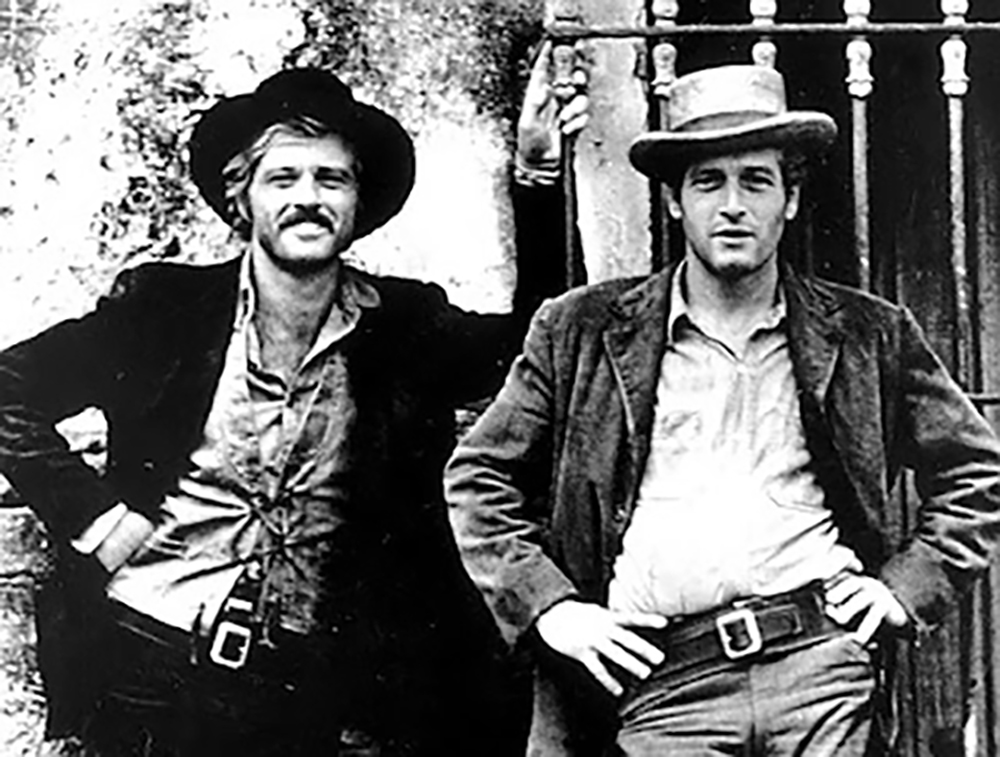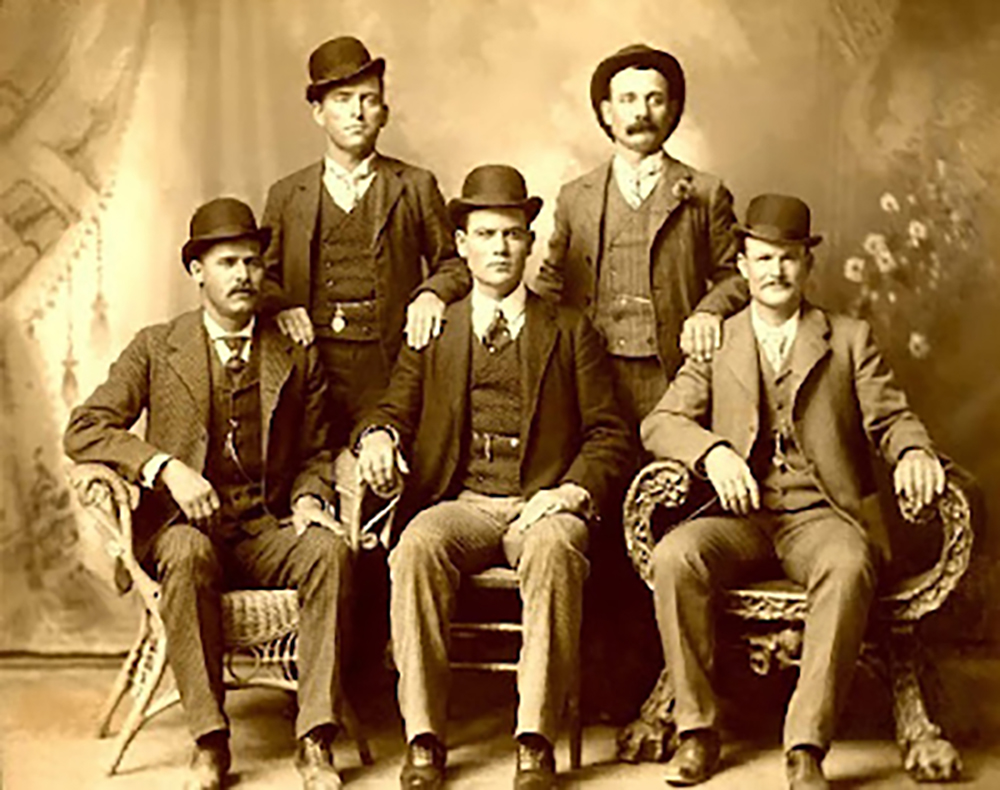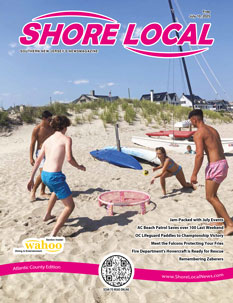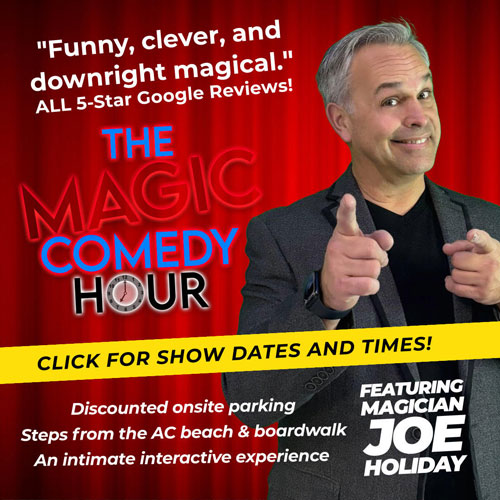By William Kelly
There’s a legend that Harry Longabaugh, the Sundance Kid, was from Atlantic City, which turns out to be partially true.
In the 1969 movie “Butch Cassidy and the Sundance Kid,” there’s a scene where they get off a train in a desolate place in Bolivia and Butch Cassidy (Paul Newman), whose idea it was to go there, says, “It could be worse. You get a lot more for your money in Bolivia. I know, I checked it out.”
The Sundance Kid (Robert Redford) responds:
“This might be the garden spot of the whole country. People may travel hundreds of miles just to get to this spot where we’re standing now. This might be the Atlantic City of all Bolivia for all we know.”
Cassidy says, “Look, now I know a lot more about Bolivia than you know about Atlantic City, New Jersey, I can tell you that.”
“Ah, ha! You do, huh?” says the Kid. “I was born there. I was born in New Jersey. Brought up there.”
Donna and Paul Ernst, who lived in Ocean City at the time of the movie, saw the film and were startled when they read a National Geographic Magazine article titled, “The Outlaw Trail,” by Robert Redford, in which he mentions that the Sundance Kid’s real name was Harry Alonzo Longabaugh and that there is a town in Wyoming near Hole in the Wall Canyon where they hung out called Atlantic City.
She wrote to the magazine, whose historian sent her a detailed Longabaugh family history which showed that the Sundance Kid was the brother of Paul Ernst’s great-grandfather. Paul remembered his grandpop telling the story of his “Uncle Harry,” who had a sidekick like Jesse James. They robbed banks and gave money to poor people, and died in South America.
But then he said, “Nah, it isn’t anyone’s business. Forget it.”
His grandfather repeated the story a number of times over the years, but the family just thought he was out of his head. He was senile when he died in March, 1976. Unfortunately, Grandpop went to his grave with the details of the story of his “Uncle Henry,” the Sundance Kid. “He never told anyone all he knew,” said Donna, “and he died in silence, taking his memories with him.”
Paul and Donna were intrigued, however. They took up the trail of the outlaws and learned a lot over the following 20 years.

Harry Alonzo Longabaugh – aka the Sundance Kid, was not actually born in Atlantic City, as the movie suggests, but rather in Mont Clare, on the Schuylkill Canal in Pennsylvania. According to Donna Ernst, “Because Mont Clare, Pennsylvania, is extremely small, historians thought it was actually Mont Clare, New Jersey.
Harry, the Sundance Kid, had a brother named Harvey who did live in Atlantic City, and is credited with helping to build the first boardwalk. Since his brother had a place at the shore, Harry frequently visited him, and thus the Atlantic City connection was firmly established. Becoming increasingly fascinated by the subject, Donna and Paul began an intense search of family history to learn as much as they could about Harry Longabaugh, digging through old family and official records.
According to Donna, “We discovered that Conrad Longabaugh had immigrated to Philadelphia on December 24, 1772, aboard the brig Morning Star. He fought in the Revolutionary War and raised his family in Eastern Pennsylvania. His descendants eventually settled in Mont Clare, where, during the spring of 1867, Harry Alongzo Longabaugh was born.”
On August 30, 1882, the restless 14-year-old Harry left to go west with some cousins in a covered wagon, eventually settling in Cortez, Colorado, where they lived for four years.
After working a cattle drive to Montana in 1886, he went to the Black Hills area where at Sundance, Wyoming, on February 27, 1887, he allegedly stole a light gray horse, a gun and a saddle from an employee of the VVV Ranch. After being caught, the 20-year-old attempted to escape by jumping off a train, but was recaptured.
The local Yellowstone Journal newspaper compared him to Jesse James and attributed some other local crimes to him. In response, from the Sundance Jail, he wrote a letter to the editor:
“Contrary to the statement in the Journal, I deny having stolen any horses in Canada, or anyplace else, up to the time I was captured, at which time I was riding a horse which I bought and paid for. Nor had I the slightest idea of stealing any horses. I am aware that some of your readers will say my statement should be taken or what it is worth, on account of the hard name which has been forced upon me, nevertheless it is true. As for my recapture by Deputy Sheriff Davis, all I can say is that he did his work well and were it not for him ‘playing possum’ I would now be on my way south, where I had hoped to go and live a better life.”
Harry Lonabaugh
When Harry Lonabaugh got out of jail, the newspaper reported, “the kid has been released from Sundance,” and the Sundance Kid was born.
As Donna Ernst relates, “Stealing horses soon became robbing banks and holding up trains. Sundance and his pal Butch Cassidy were the leaders of a loose-knit group of thieves better known as the Wild Bunch. Together these men were so skilled at escaping the law that the American Bankers Association and the Union Pacific Railroad hired the Pinkerton Detective Agency to capture them – at any cost.”

In the course of their two-decades-long quest to learn as much as possible about their renegade relation, Donna and Paul spent summer vacations traveling the West’s “Outlaw Trails,” where they visited banks their great-uncle once robbed and the cabins in the mountains where they hid out from the law. They also found another Atlantic City connection – Atlantic City, Wyoming, one of the ghost towns near Hole-in-the-Wall Wyoming.
They trailed the Wild Bunch to Fort Worth, Texas, where the gang regrouped and had the famous photograph taken.
“Sundance and Butch saw their way of life changing before their eyes,” Donna relates. “Their fellow outlaws were all being killed or caught and jailed. It was time to move on, to take a trip to South America, and to start a new life. So the Wild Bunch met in Fort Worth for a goodbye celebration.
“One of the things they did was have their picture taken together, but unknown to them, the photographer placed the picture on display in his window, where it was seen by a Wells Fargo detective who recognized one of the men.”
With the law hot on their tail, says Donna, “the Sundance Kid returned home with his wife, Ethel Place, to see his family: brother Harvey, and his sisters Samanna and Emma, and meet his nieces and nephews. Then he explained his decision to move to South America and told his family he was going to settle down, buy a ranch and go straight.”
According to the reports of the Pinkerton Detectives who were after him, Sundance and Ethel were seen “frolicking” at the beach in Atlantic City, where the Sundance Kid’s brother, Harvey, lived at the time. “We suspect they visited Harvey’s family at the beach,” says Donna, “and at that time Grandpop was about 11 years old.”
According to the legend, Butch Cassidy and the Sundance Kid fled to South America and were the two American bandits killed in a shoot-out in San Vicente, Bolivia on Nov. 8, 1908.
Lula Parker Betenson, Butch Cassidy’s sister, wrote a book in 1975. In “Butch Cassidy, My Brother,” she claims her brother returned home years after he was reported killed in South America, and told the family that he last saw the Sundance Kid and Ethel Place at a bullfight in Mexico City.
In 1991, research historian Dan Buck, and anthropologist Clyde Snow exhumed the bodies of the “bandito Yankees,” killed and buried in San Vicente, Bolivia, and conducted DNA tests to match genetic material with descendants of Cassidy and Longabaugh. The negative results left the case open to historical debate as to whether Butch Cassidy and the Sundance Kid were killed in South America, or merely encouraged the rumors of their death to get the Pinkertons off their trail and to start a new life outside of crime.
As a result of their research and travels, Donna Ernst wrote a book in 1992, “Sundance – My Uncle,” which chronicles the full story of Harry Alonzo Longabaugh, at least what could be learned today.
At a meeting of Western Outlaw Lawmen History Association, Donna Ernst said, “While I am not a professional writer, I don’t mind doing a lot of research. I have mixed my desire for accuracy and my access to private family information together with the historical details of Sundance’s life. In the process I have found some new information, and have tried to correct a few inaccuracies.”
Next Week: Charlie Gondorf ‘The Sting’s’ Atlantic County connection. Robert Redford and Paul Newman made two big movie hits together – “Butch Cassidy and the Sundance Kid,” and “The Sting.” While Redford portrayed the Sundance Kid, Paul Newman played Charlie Gondorf in “The Sting.” The real Gondorf was an Atlantic City bartender who ran big con stings on the Boardwalk.














